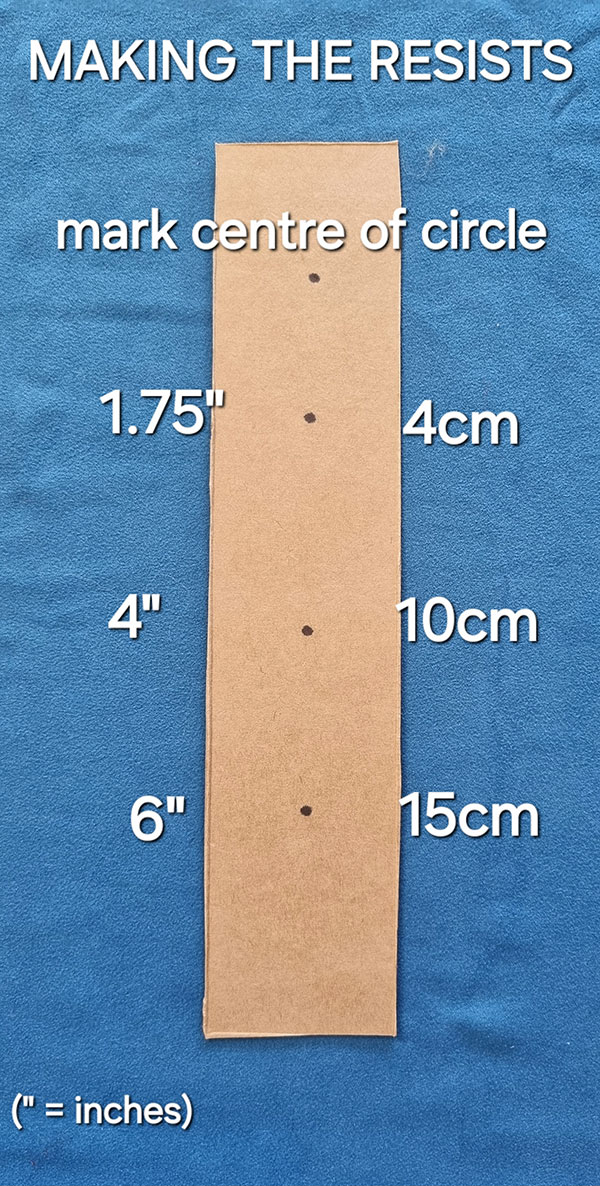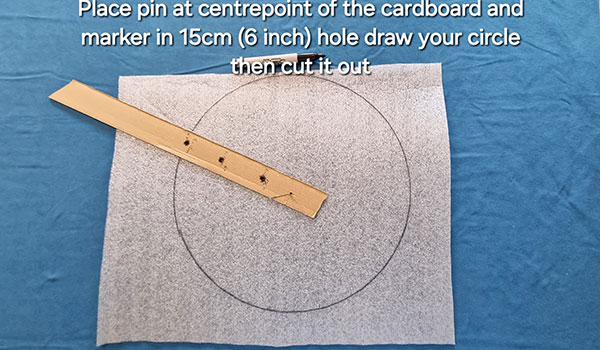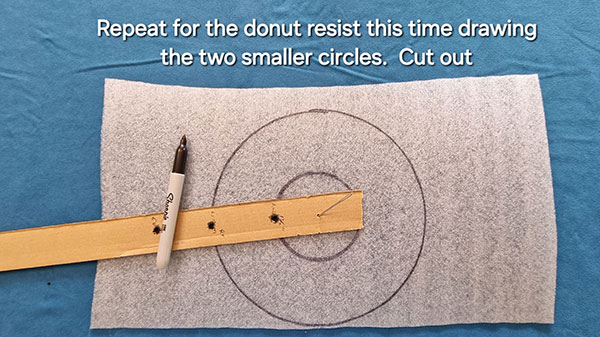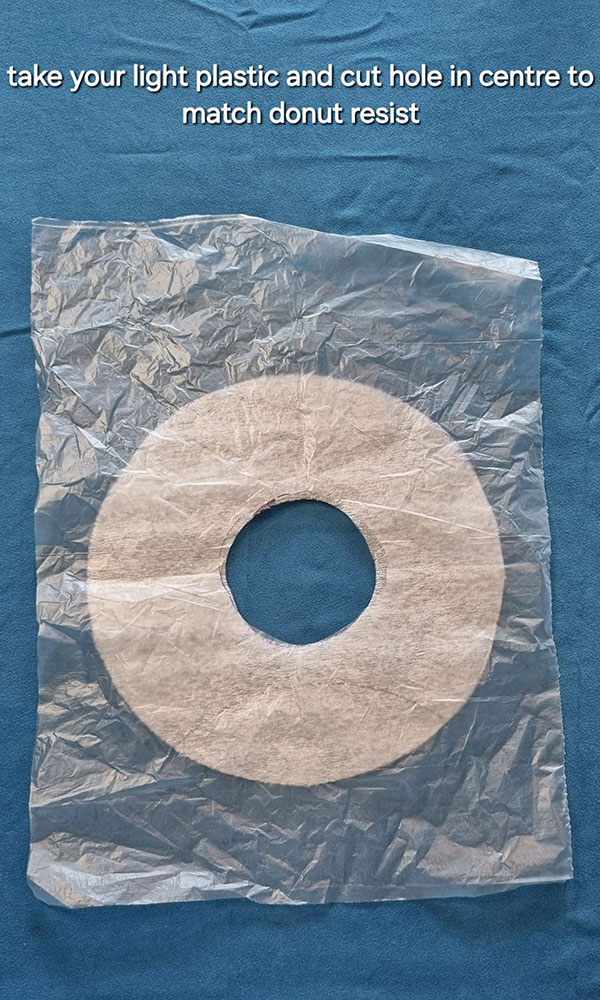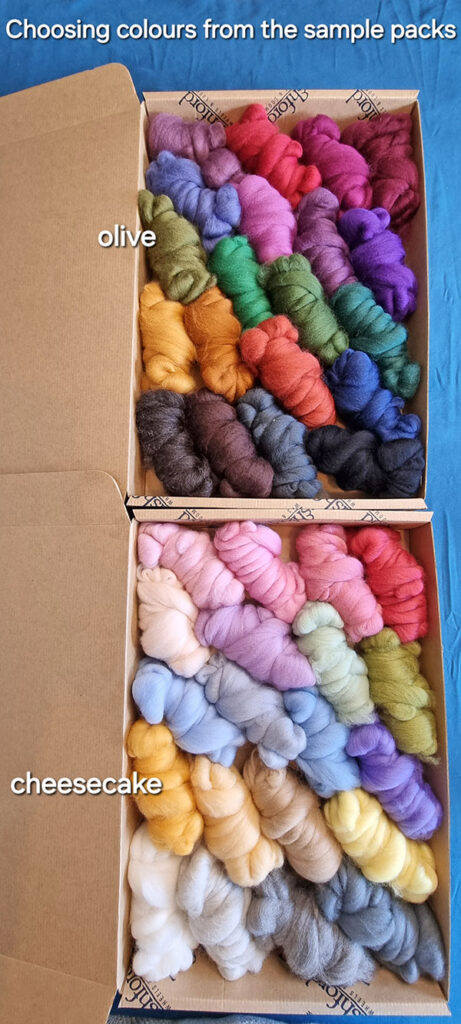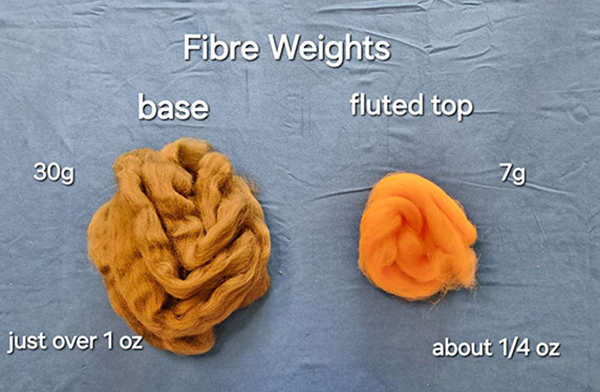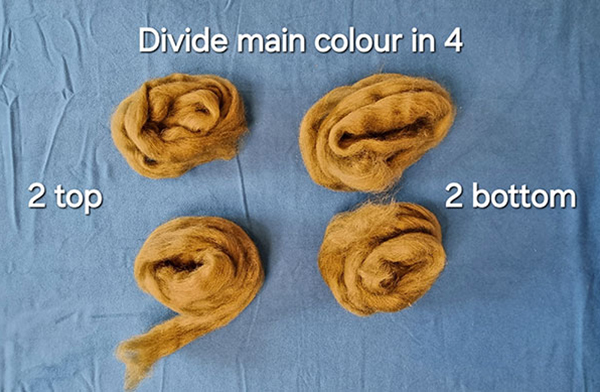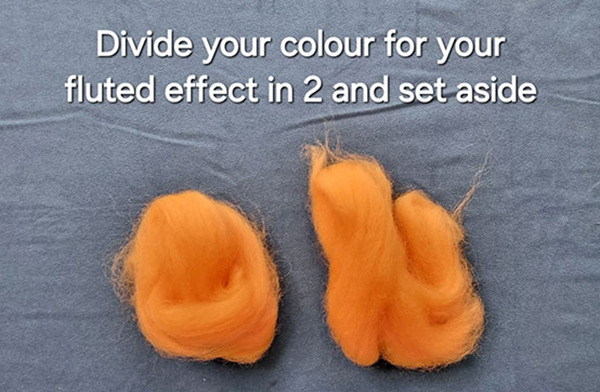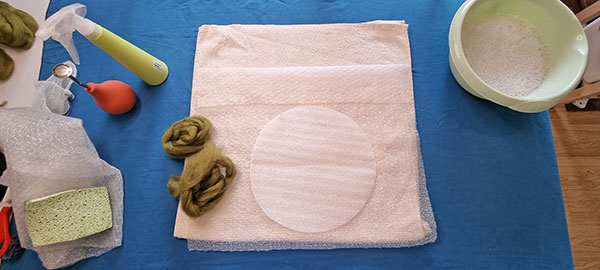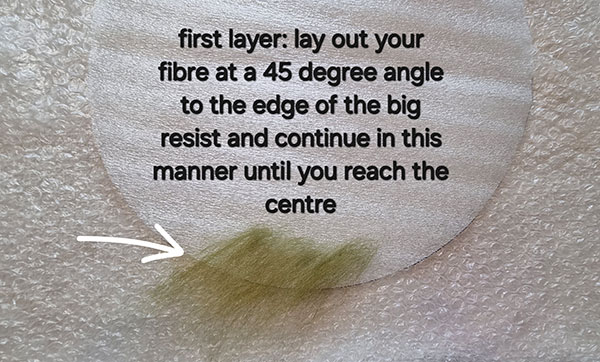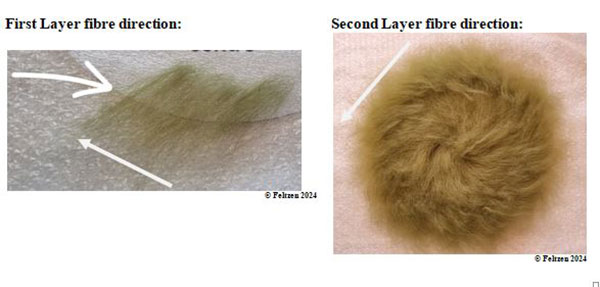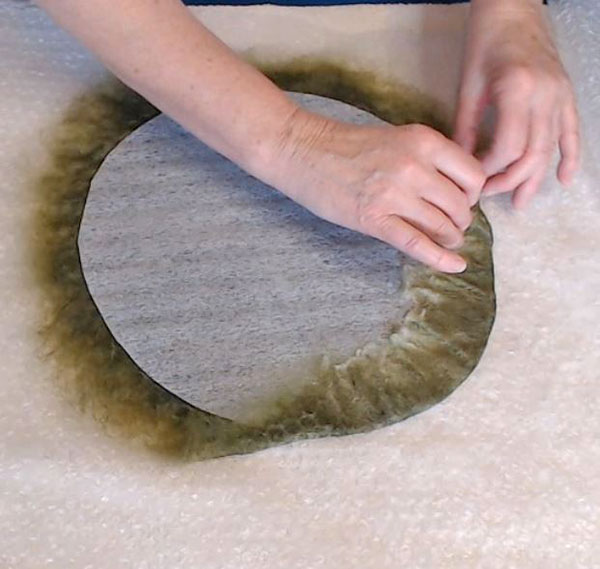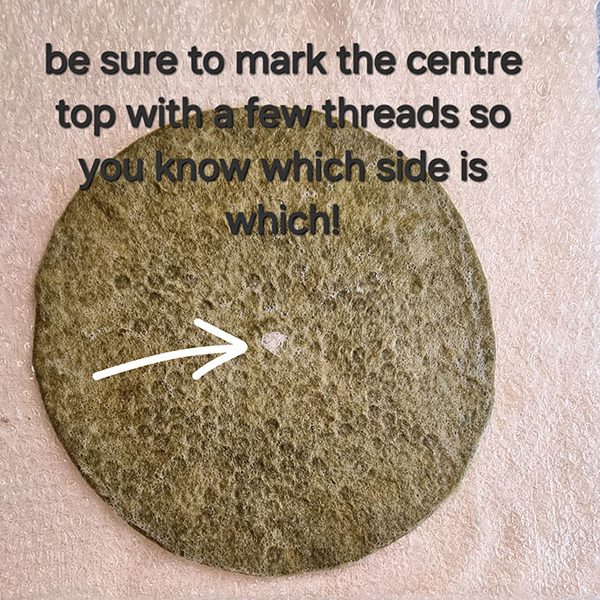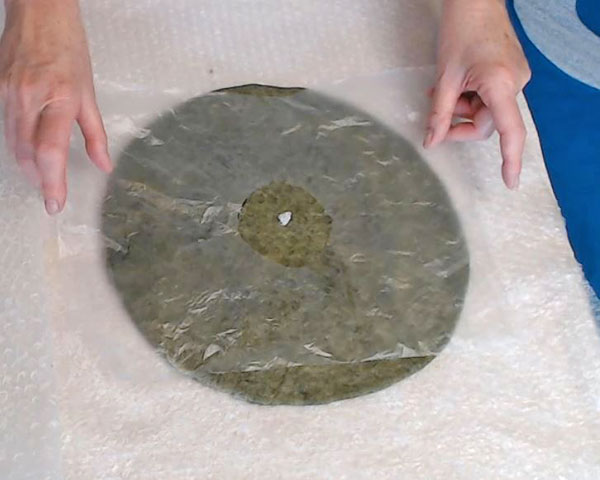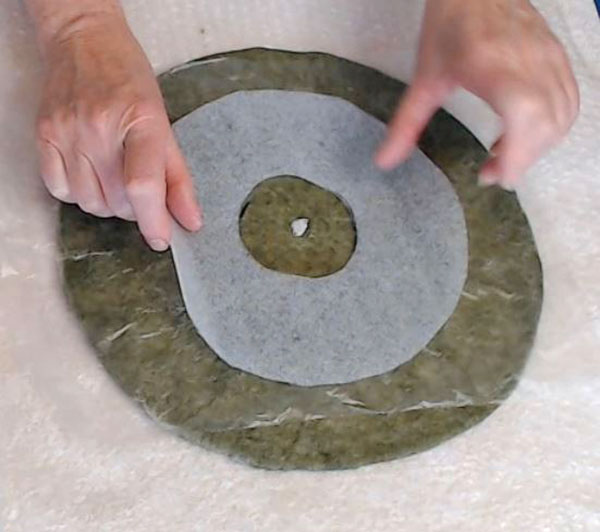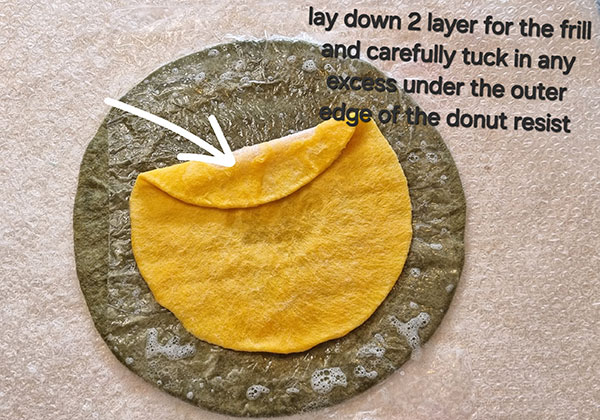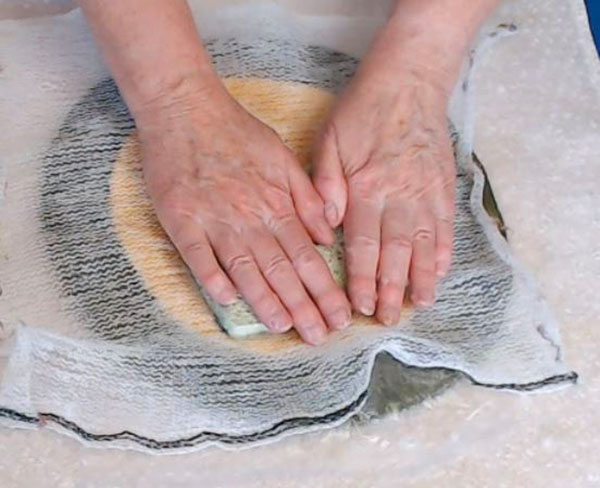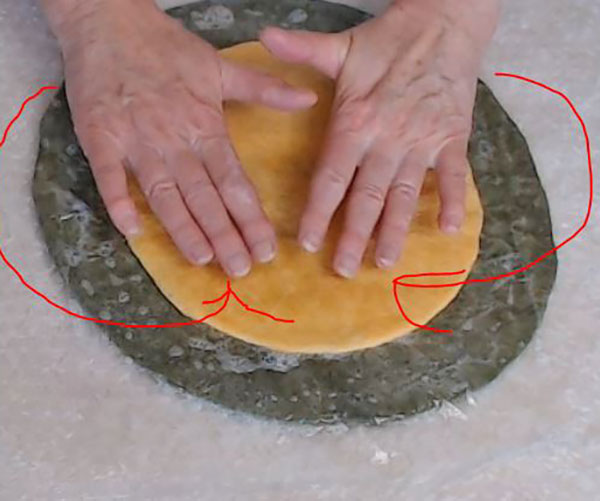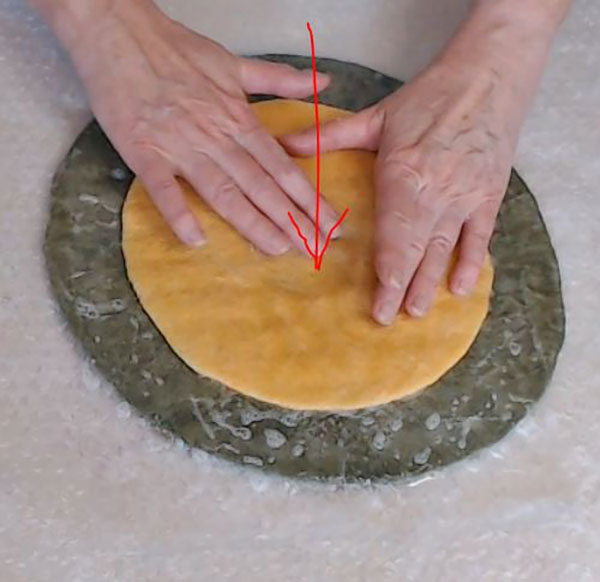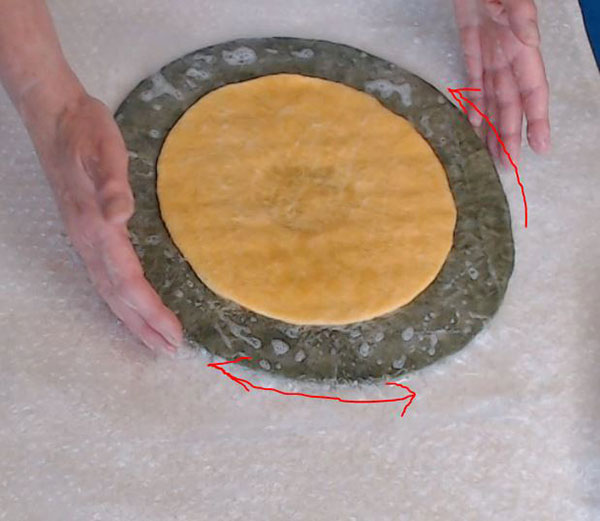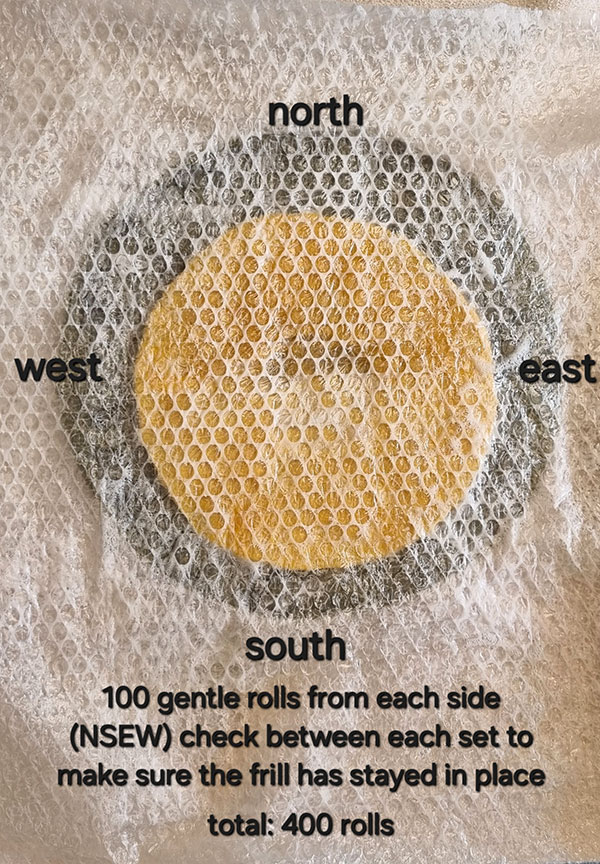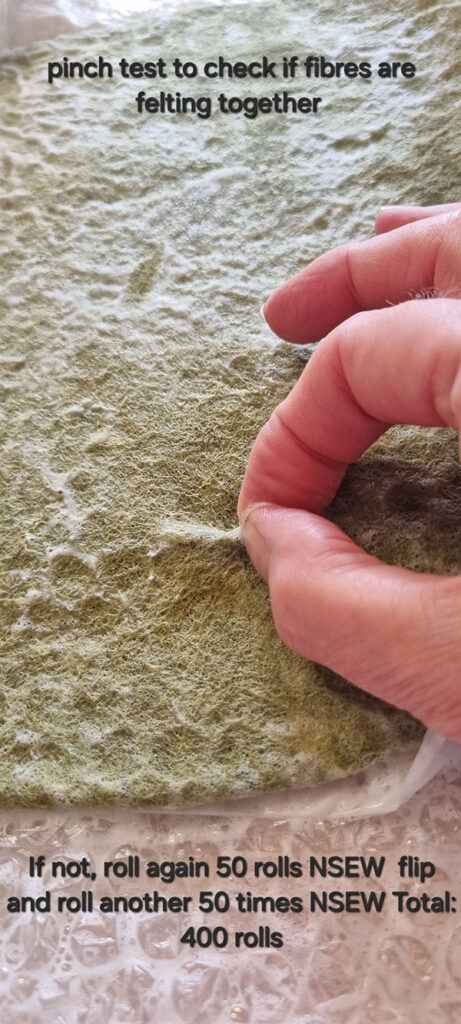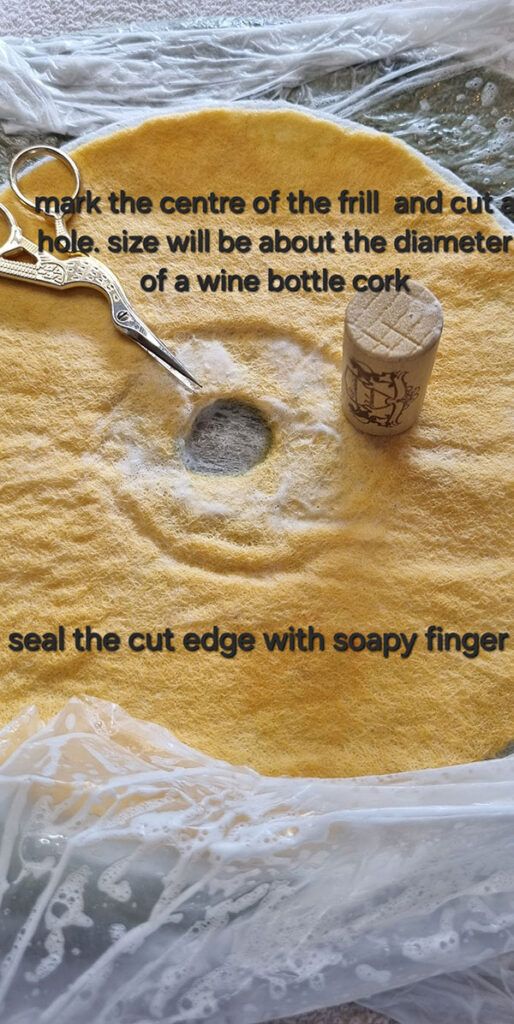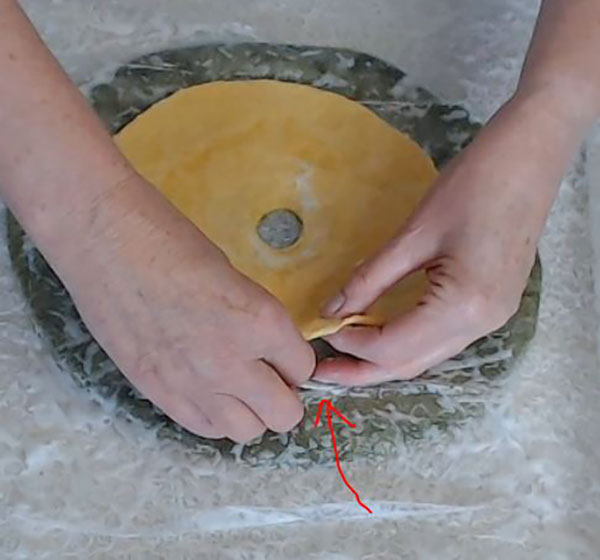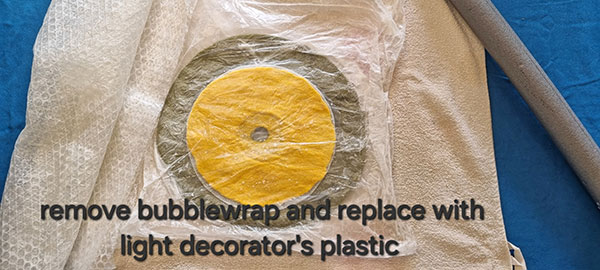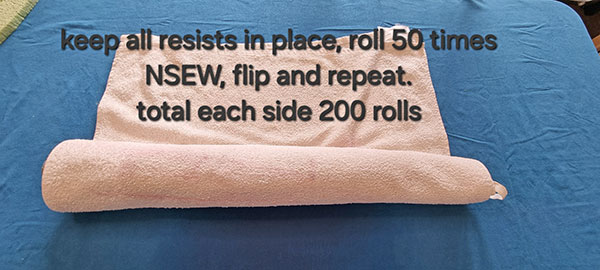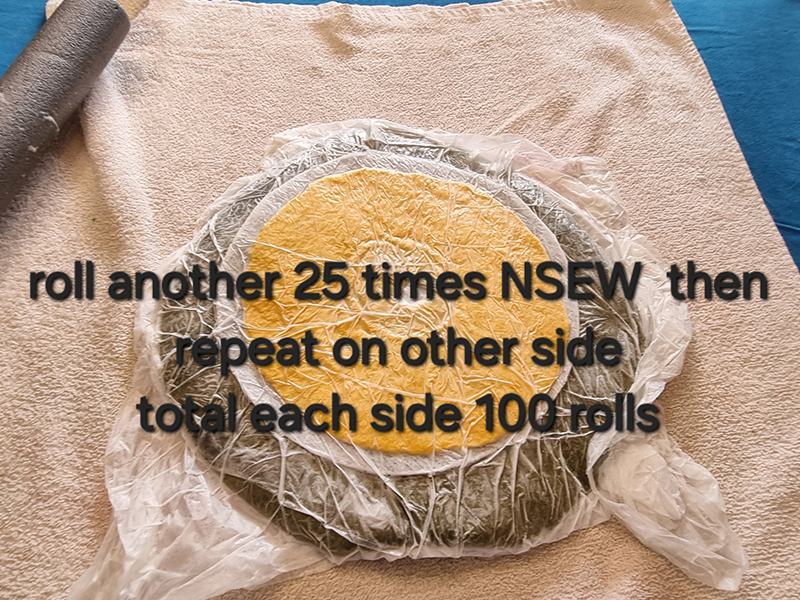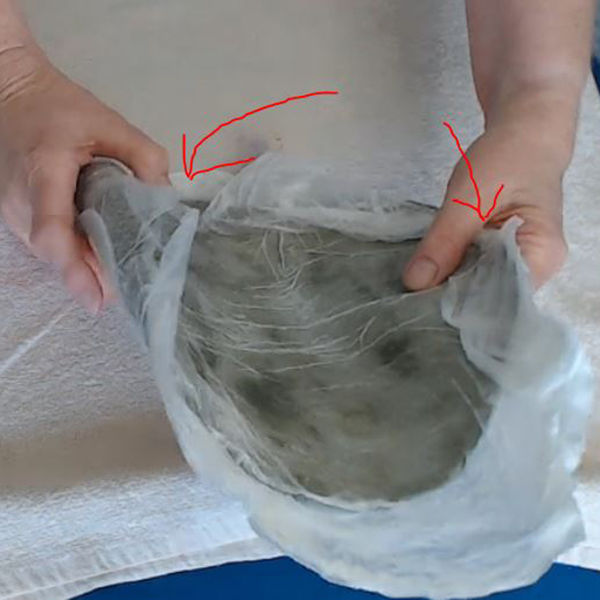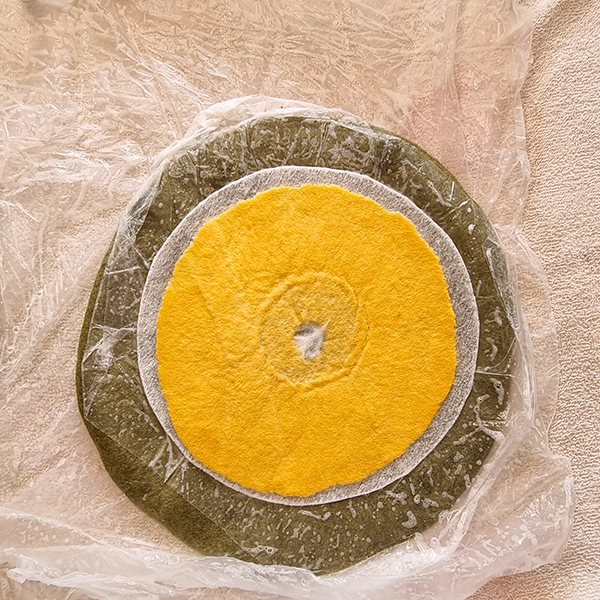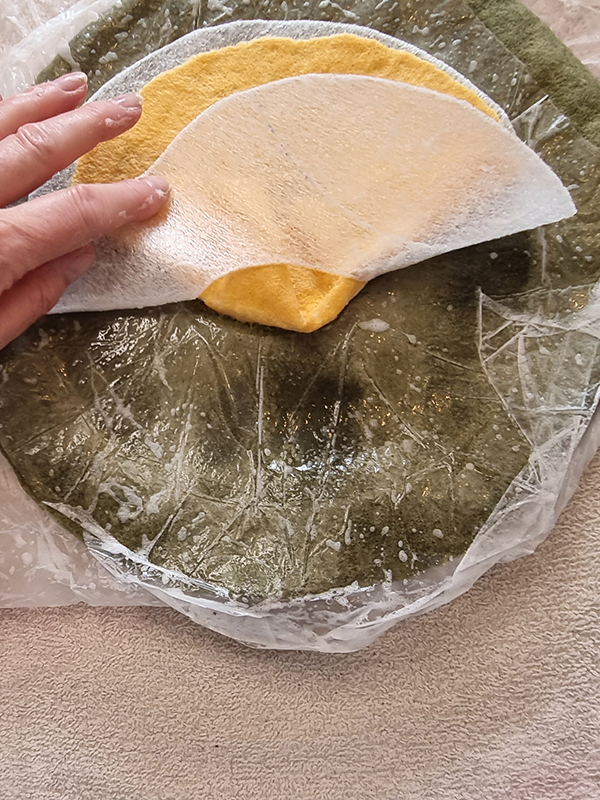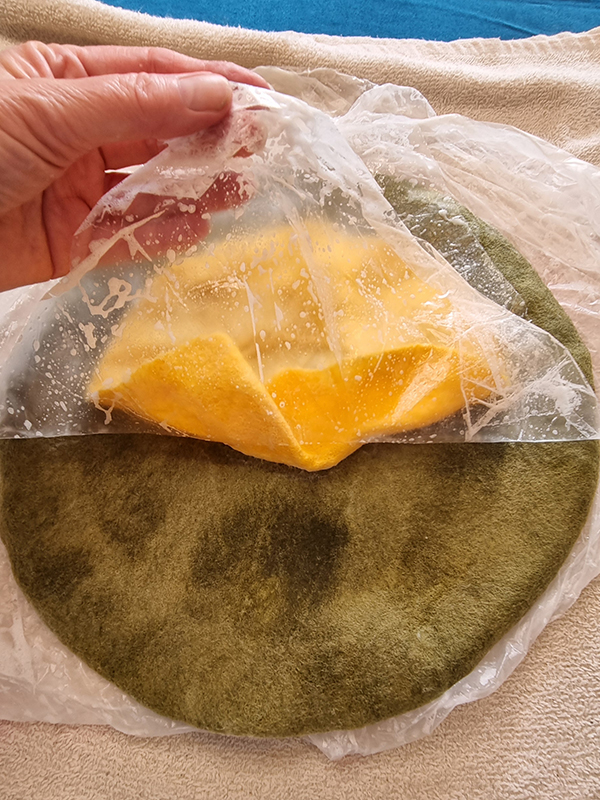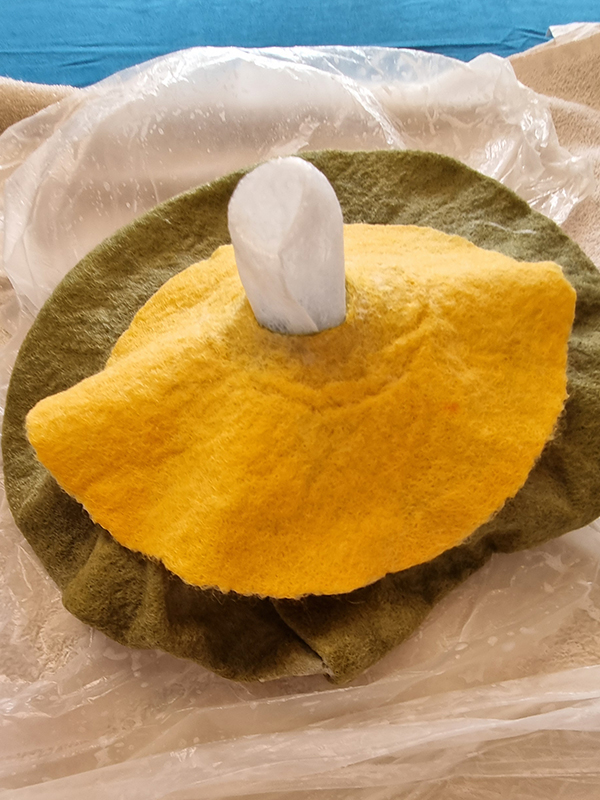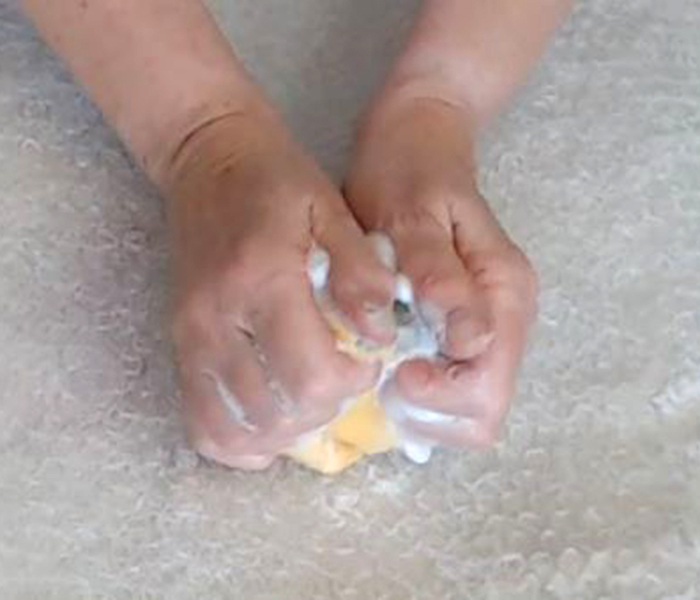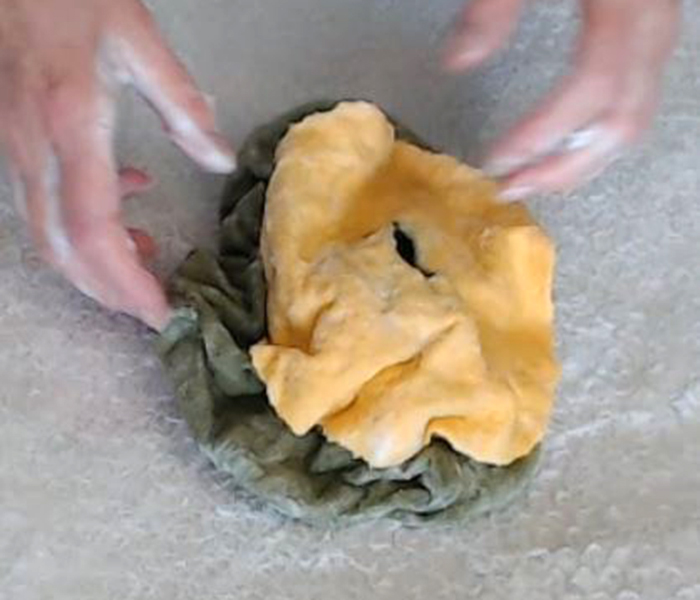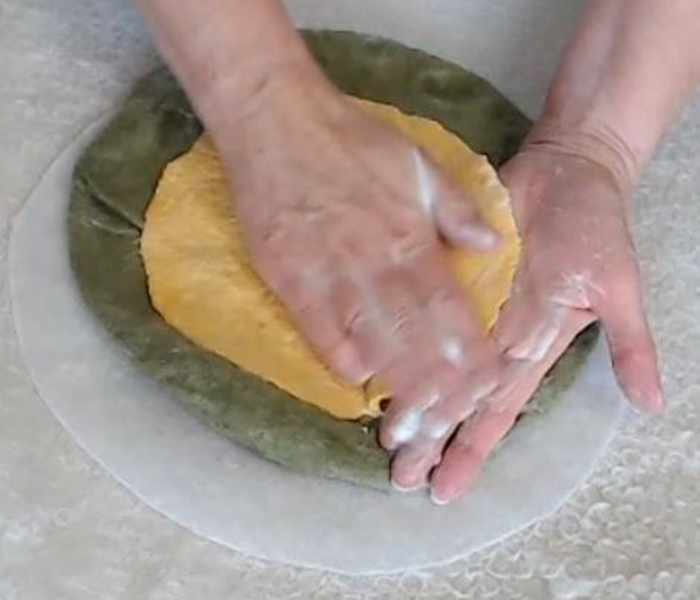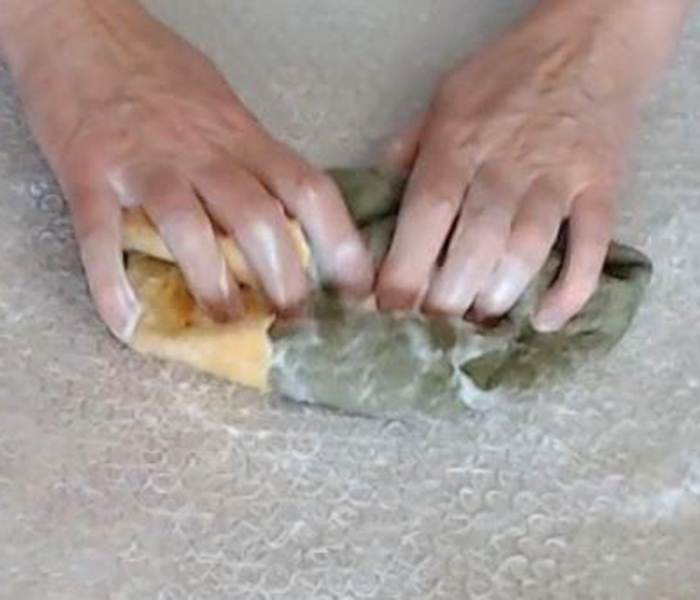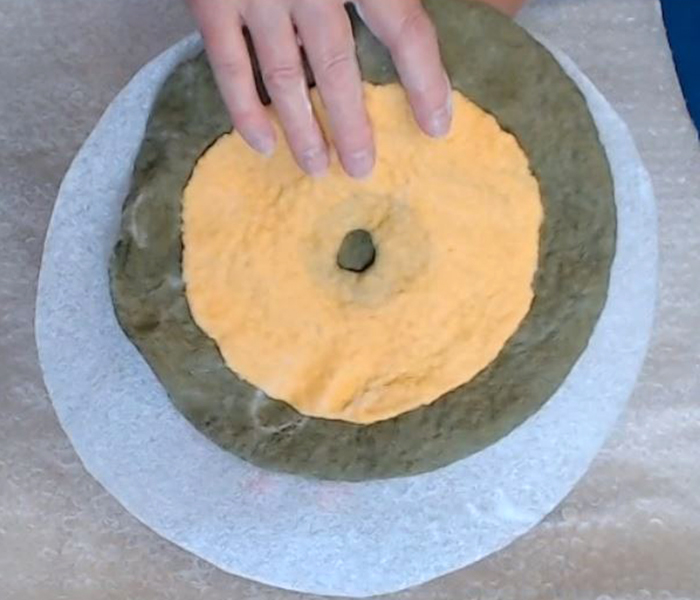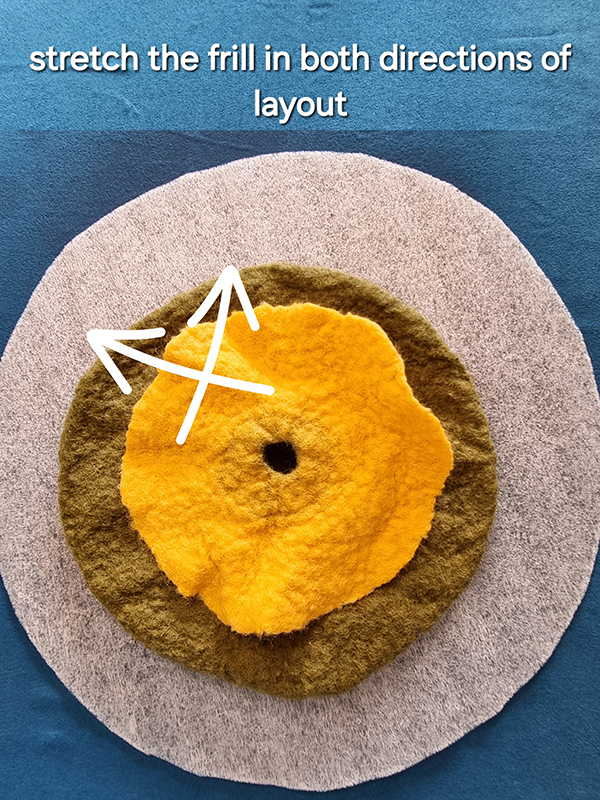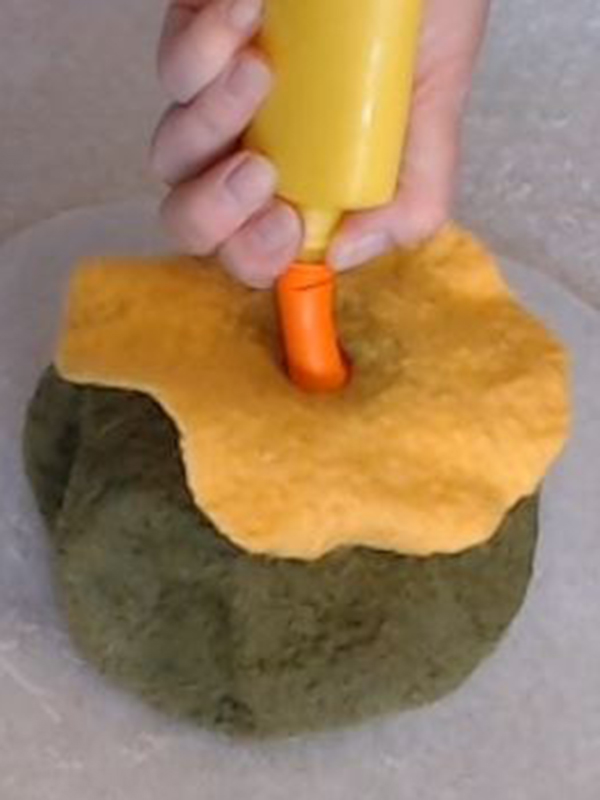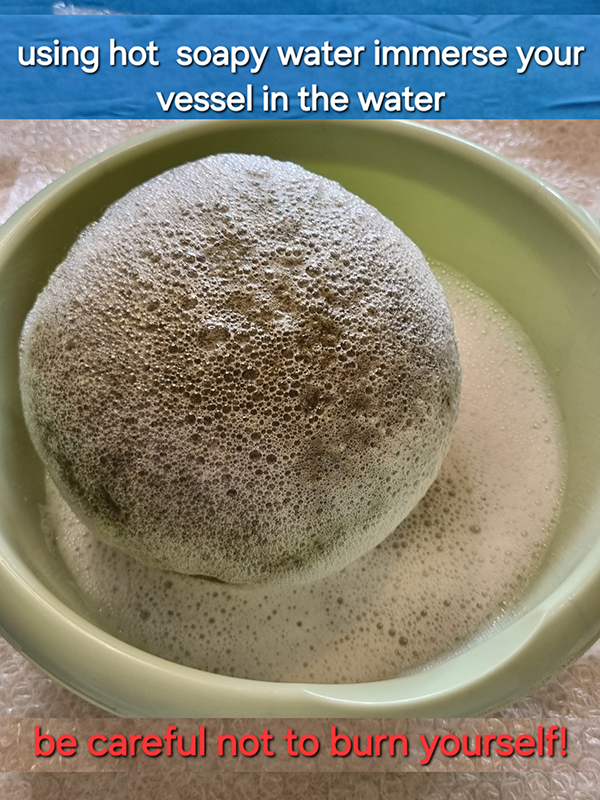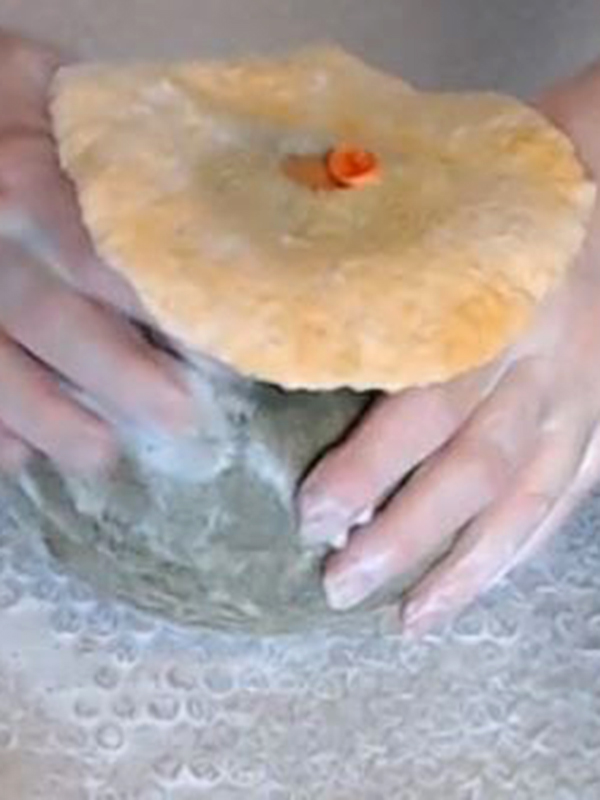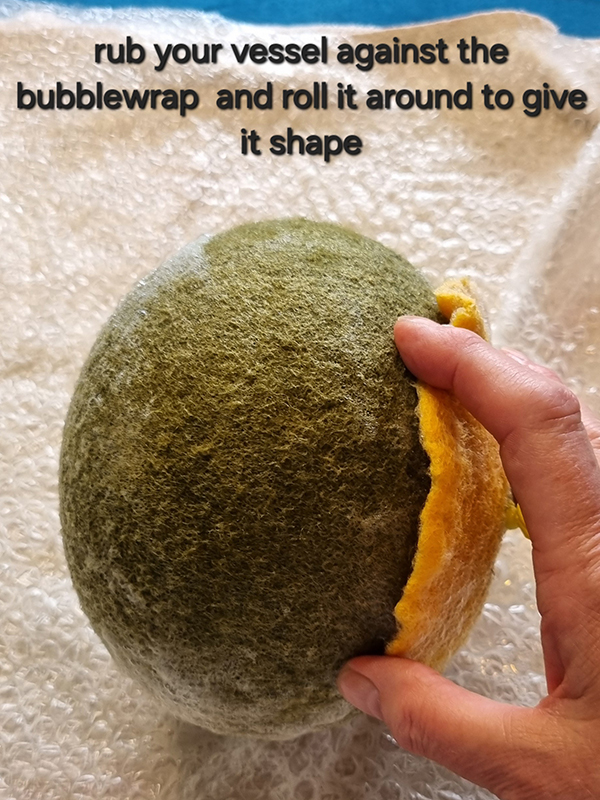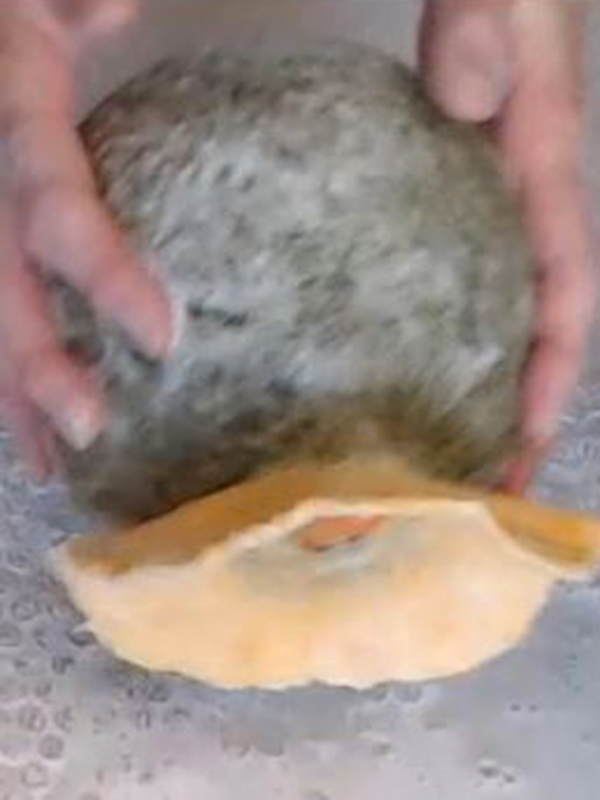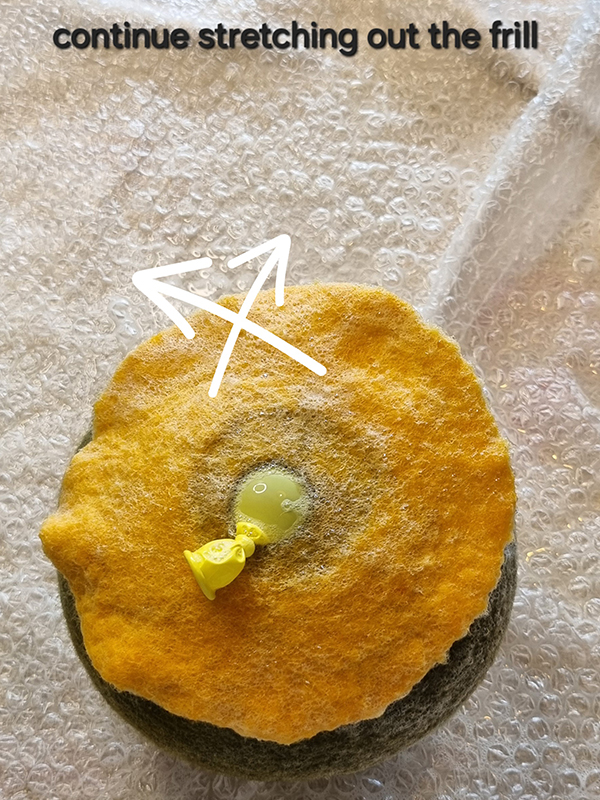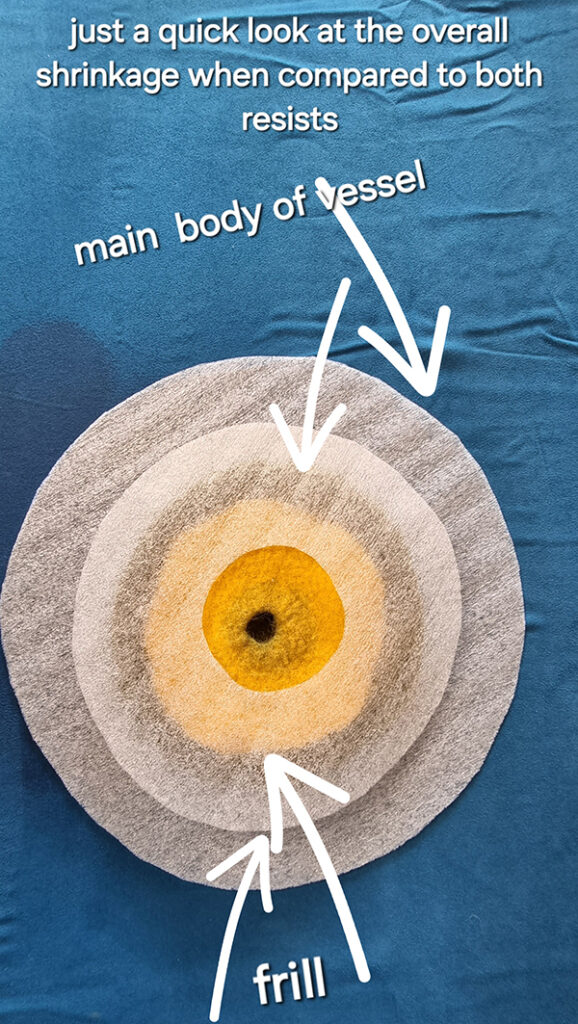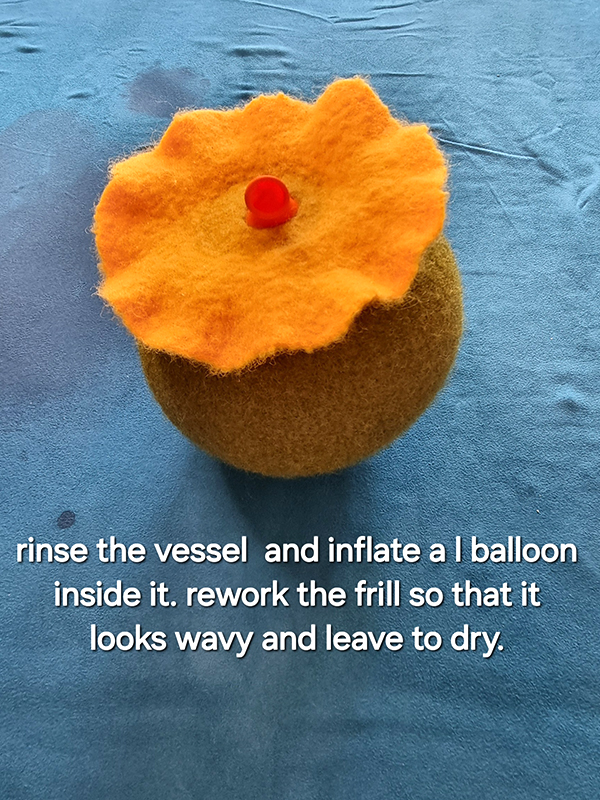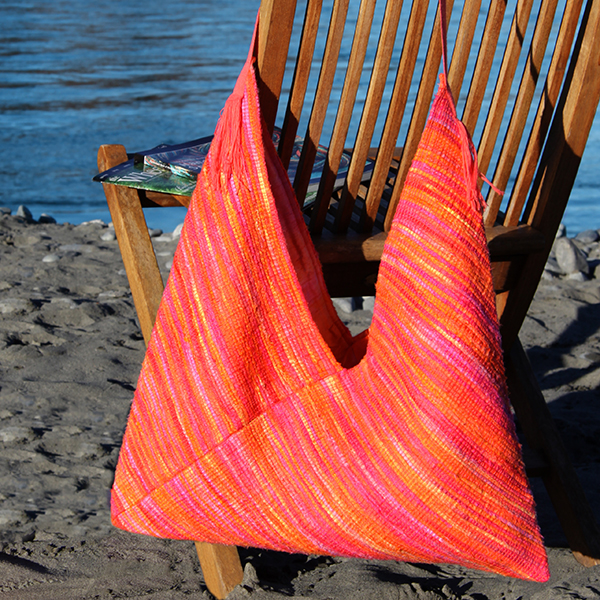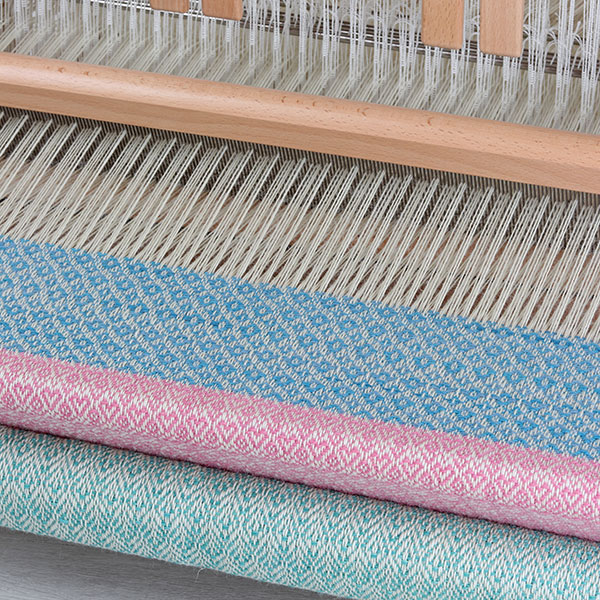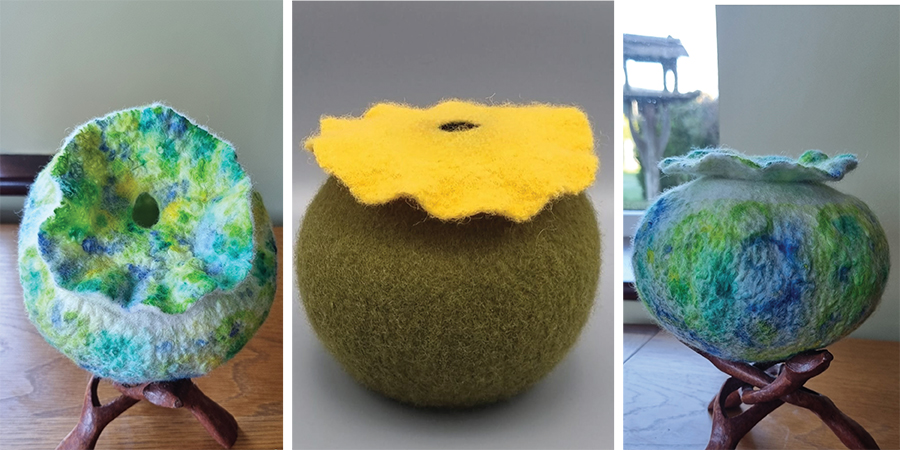
Felted Frilled Vessel
I meet Helene when she visited us here in Ashburton last year. Helene has been felting for over 10 years and enjoys working on flat and structured 3D pieces, loves experimentation and pushing textile boundaries and has exhibited locally and internationally. I would like to thank Helene for sharing these fantastic, detailed, step-by-step instructions which are easy to follow even if you are a beginner felter. This technique can be applied to create a variety of vessels, bowls and decorations.
I hope you enjoy giving this project a go.
Happy felting!

Kate
Meet Helene Dooley
While textiles and creativity have been part of me since childhood, my adventure into felting began in 2013. I am largely self-taught, but count myself very fortunate to have attended many Master Classes which were delivered by international felt tutors at home in Dublin, Ireland, abroad and online. I enjoy working on flat and structured 3D pieces, love experimentation and pushing textile boundaries and have exhibited locally and internationally.
Looking back, I was always in my happiest place when tutoring, training or facilitating adults, whether in the financial services industry, as a researcher and development consultant or tutoring in literacy and technology. Drawing on these early experiences, I now enjoy working on felt making with both adults and young people, in person and online. I identify these moments as creative collaborations; each one is a multi-way learning process.
I am a member of the International Feltmakers Association where I am part of the Education Team and the Course Coordinator for the Discovering Feltmaking series of online classes. Other memberships include Feltmakers Ireland, and the Felting and Fibre Studio, an international collective of textile artists where I tutor and blog.
Felted Frilled Vessel
You will need:
Fibre: Approx 38 grams (1.5 oz) Corriedale fibre. I used fibre from the Ashford sampler packs for this project. If you would like to use two colours for this project you will need 30 g (1.1 oz) of your main colour and 0.6g (approx. 0.25 oz) for the frill.

Equipment list:
- Flooring underlay or bubble wrap or heavy duty plastic for the main resists*
- Light plastic bag for use as a protector between the resists*
- Light decorators plastic*
- Light netting
- Cardboard strip (e.g. cut from a cereal package)
- Pin
- Ruler and pen/marker
- 2 or 3 round balloons
- Bubble Wrap – you will be working with a 30cm circular resist so you will need sufficient to cover top/bottom.
- Towels (for felting on and for drying your vessel)
- Soap (your usual felting soap e.g.olive soap)
- Bowl/basin
- Ball brauser / water sprinkler
- Cloth/sponge for mopping up excess water
- Pool noodle or equivalent for rolling
- Sharp scissors
- Cork from wine bottle or tool of equal diameter to mark your cutting hole
- Weighing scales (optional – I know some like to weigh their wool but it is not really necessary here)
*All the resists are reusable multiple times.
Let’s talk about resists: Resists can be used to make 3D structures and we will be using three resists for our vessel. Each will perform a different function:
- The donut will be used to create the frill
- The light plastic will stop the frill from felting to the main part of the vessel, and
- The circular resist will be used for the vessel
Materials which can be used to make reusable resists include:
- Bubble wrap
- Heavy duty plastic, for example pond lining
- Underlay for laminate flooring. An example of this can be seen at 1. and 3. in the last photo.
- Light decorators plastic (or plastic bag) to separate the resists.
- To make the resists:
- Cut a strip of cardboard from a cereal packet
- Mark the cardboard to indicate the centre of your circles
- From this mark, measure out the following radii:
- 4cm (1.75 inches for the centre hole of the donut resist)
- 10cm (4 inches) for the outside of the donut resist
- 15cm (6 inches) which is the radius of the larger resist
- Then take your light plastic and cut a hole that is equal or slightly larger than the hole in the donut resist. Please see photo illustration below (Note: this hole should not be smaller).
Please follow the instructions on the next three photos to cut out your resists:
Choosing my colours
I am using Corriedale fibre from Ashford for the vessel. It is a beautiful fibre that is perfect for 3D objects and wearables such as hats and bags. The corriedale sampler packs from Ashford are perfect for this project as each sample has sufficient fibre to make the vessel. Each sampler pack contains 20 beautiful colours. Both the dark and the light sampler packs are a treat to open and I found it difficult to choose just one colour to work with. In the end I chose one colour from each pack.
Preparing the fibre
Each colour in the Sampler packs weighs around 38g (1.4 ounces) and this is plenty for the project. As I am using two colours I have weighed out 30g (about 1.1 ounces) of the main colour (olive) and around 7g (.25 ounce) (cheesecake) for the frill.
Divide the main colour in four. Two will be used for the top of the vessel and two will be used on the bottom. You may not use all of the fibre in the main body of the vessel. There is just a little extra in case you lay your fibre a little heavier than I do. Divide your frill colour in two and set these aside.
Laying out bottom side on main resist
Place bubble wrap (bubble sides up) on your towel and have hand warm soapy water, your water sprinkler, light netting and the second piece of bubble wrap ready. You will also need two bundles of your main colour fibre. Place the main resist on top of the bubble wrap.
Taking your first bundle, lay out the fibre at a 45 degree angle to the edge of the resist. Continue laying out at this angle until you reach the centre making sure that your shingles overlap by one third to one half the previous layer. If you find laying out at this angle a challenge you could turn your bubble wrap a quarter turn as you lay out.
Your second layer will be laid at a 90 degree angle to the first layer. So, if the wispy ends of the fibre are sweeping in a clockwise direction on the first layer, they will sweep in a counter clockwise direction on the second layer.
Laying out top side on main resist
First of all, once you have flipped the resist over to work on the top side you will need to fold the overlap tightly around the resist. Wet any of the fibre if it is still dry and make sure to keep the folds nice and flat. You will need the remaining two bundles of your main colour for this side.
Once the overlap is turned in to the top side, you can start laying out your fibre at the same 45 degree angle as you did on the bottom. This time, do not lay the fibre to the edge of the resist as you will already have fibre there from the overlap. Instead, lay it like you are laying out the second row of shingles. Using the overlap as the first row, cover about one third to a half of this with your pulled fibre. The wispy side will be towards the overlap. Continue doing this until you have the first circle of your dry shingles laid out. The second circle of your layout should reach the centre of the circle. As you will need to keep the centre of the layer thin, to accommodate the layers of the frill, turn the wispy ends of the pulled fibre towards the centre. Lay out your second layer in the same manner but in the counter clockwise layout direction you used on the bottom side of the vessel. You may find that one bundle of the fibre will cover the two layers. Wet this down using hand warm soapy water and press down with your netting. Rub gently for a minute to form a skin. Lift the netting and place a little white cotton thread at the centre of the top as a reminder as to which side is the top.
If you find that you have any fibres hanging over the edge of the resist, cover with the top piece of bubble wrap, flip over to the other side and tuck the fibres in, then flip it back to the top side.
Laying out the frill
You will use the fibre you have chosen for the frill for this part along with the light plastic (hole cut in centre) and the donut resist.
Remove the bubble wrap from the top of the pack and lay the light plastic over the top section of the vessel. Then lay the donut resist on top of this and align the centre holes.
Remove your thread marker from the centre. Now, take your two bundles of fibre which you have set aside for the frill. Lay your two layers of fibres in the same manner as you did the base (at 45 degrees to the edge of the donut resist). The wispy ends of the fibre should go over the outer edge of the resist. The layers should reach the centre of the vessel so you will end up covering the hole in the centre of the donut. This is the area which will attach the frill to the base. Then, carefully tuck the wispy end in under the resist (see photo).
If you find that the pack is too wet, you can remove some of the soapy water at this point. Place the netting on top of the pack and using your sponge or cloth, lightly press down and soak up the excess. Check the pack to see if you notice any thinness in your layout and if there is, add a little extra fibre, wet and pat down.
Time to start rubbing as follows:
Place the bubble wrap, bubble side down on the pack. (I have left it off here so that you can see the direction I will be rubbing). First with the bubble wrap covering the pack, wet the top so your hands glide easier over the bubble wrap, rub inwards from the side of the resist. This will push the fibres towards the centre and should help stop a ridge forming at the side. If you rub outwards the fibres will be pushed over the edge of the resist and this action could form a ridge. You will continue to do this for 2 or 3 minutes.
Next rub the centre hole where the frill and the main body of the vessel meet. You want to make sure that this starts to connect together well before you move on to the rolling. You should rub this for around 5 minutes. Check to make sure that this is connecting after the 5 minutes rubbing. Very gently lift the frill and the light plastic and see if the bottom layer is starting to adhere to the frill.
Finally, rub the edge of the resist for a further 2 to 3 minutes.
Repeat the rubbing action on the base of the vessel.
Start rubbing (top)
The accompanying video contains a full demonstration of the rubbing actions at the top of the vessel.
Keep rubbing (bottom)
The accompanying video contains a full demonstration of the rubbing actions at the bottom of the vessel.
Start rolling
Once you have rubbed the pack, check to make sure that the frill is sticking to the vessel. To do this, gentle turn back the frill resist and the light plastic. When you reach the inside edge of the donut resist the main vessel should lift very slightly. When you see this you will know that it is being pulled by the frill layer. It is now ready for rolling.
Roll up the package around your roller and then roll the pack in your towel. At this point you may choose to tie both ends of the rolled pack to make sure it does not come undone during the rolling. This is optional and depends on how you would normally roll your pieces. Roll lightly to start north, south, east and west 100 rolls each side. Total rolls 400. Then open your pack, check your vessel to make sure everything is still flat and that your frill has not shifted, put your bubble wrap back over the top, flip and roll in the same manner on the other side (with bottom facing upwards). Total rolls bottom side up: 400. You will have completed 800 rolls in total.
Pinch testing
Once the pack has been rolled on both sides, it is time to check the vessel. First carry out the pinch test and if you find that the fibres are still lifting, more rolling is needed. Also check to make sure that the frill and the vessel are bonding together. I decided that my vessel needed more rolling so I rolled for a further 50 times NSEW both sides. Total 200 times each side, 400 rolls in total.
Cutting and fulling
Once you are happy that with your pinch test and the bonding of the frill to the main vessel, it will be time to cut a hole in the top. Find the centre of the area where the frill and main vessel meet. Mark this area as this is where you will cut. I like to leave a small imprint in the felt as a guide. As I want to make the hole as small as I can, I use a wine bottle cork for this. Once you have cut out the circle for the hole, seal it with soapy fingers.
Next, remove the frill from its resist and allow the underside to fold naturally on the bottom of the frill. Try to keep the circle shape while you are doing this. Keep it as flat as possible.
It is now time to start fulling the vessel. You will use the larger piece of decorators’ plastic for this purpose. Do not use hot water at this point. Hot water is only introduced at the final stage of the process. Keep all the resists in place.
Checking shrinkage and shaping the frill
Check your shrinkage at this point. Your vessel should be starting to curl around the resist.
Check the frill and reshape if needed.
Cover with the light plastic and roll again, this time for 25 rolls NSEW.
Check vessel again, there should be further shrinkage. You can see that the frill has shrunk when the vessel is flattened out. Now it is time to remove the resists.
Removing resists and fulling
Remove the resists in the following order; the donut, then the light plastic protector and finally the main resist.
Once you have removed all of the resists you may choose to check the shrinkage against the main resist so that you can monitor your progress as you full the vessel.
Full the vessel in the following manner. The temperature of the water should not be increased yet. As you full, check it periodically to make sure it is not sticking to itself. To do this, run your finger inside the main body of the vessel and also under the frill.
Continue fulling in this manner for a few minutes longer.
Stretching the frill
As you continue fulling, start stretching the edges of the frill. Stretch in the direction of your original 45 degree layout. It is also a good time to check your shrinkage against the main resist.
Introducing the hot water and shaping with the balloon
It’s now time to introduce the hot water. Be very careful not to burn your hands as the temperature will be quite hot. Please wear gloves if you feel that they are needed. Once your vessel has shrunk sufficiently (check the last photo for reference in this regard), raise the temperature of your soapy water and dunk the vessel in it. Continue fulling in the same manner as before. Continue stretching your frill edges. If your vessel feels like it is getting cold, dunk it again in the hot water.
When you are happy with your shrinkage, inflate the balloon inside the vessel. I find it helpful to blow up the balloon and deflate it first so that it stretches it a bit before inflating it inside the vessel.
Once the balloon is inflated and tied off, dip the vessel in the hot water and start rubbing it all over, against the bubble wrap and also bouncing it.
Once you have repeated the cycle of fulling by the various methods described above and stretching your frill, it will be time to deflate the balloon and shock the fibres further by dipping in hot then cold water a number of times. Here is a photo of my shrinkage after this process.
Finishing the vessel
Rinse your vessel in cold water and once you have removed all the soap you can choose to soak it with a dash of white vinegar. This is an optional step so don’t worry if you do not have the white vinegar to hand. Its function is to bring the ph balance of the vessel back to neutral. Just make sure that the water runs clear when you are giving it its final rinsing.
Now that your vessel is rinsed it is time to shape it. Inflate the balloon inside the vessel. Roll it around on some clean bubble wrap to smooth out the sides of the vessel. Then stretch out the frill using the method already discussed. Leave the balloon inside it until it dries.



